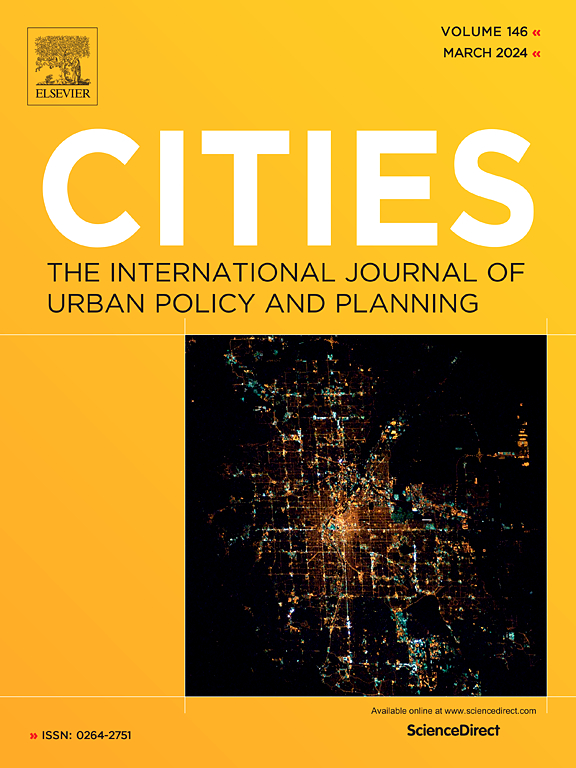Government-led regional integration and economic growth: Evidence from a quasi-natural experiment of urban agglomeration development planning policies in China
IF 6
1区 经济学
Q1 URBAN STUDIES
引用次数: 0
Abstract
Despite urban agglomeration plays a pivotal role in bolstering economic growth in developing countries, the specific mechanism of government-led regional integration in China impacting this growth has been understudied in the literature. This study innovatively uncovers such intricate mechanisms particularly focusing on industries and urban functions division, diversified agglomeration externalities, and urban network externalities within China's urban agglomerations. Our holistic framework integrating cooperation, sharing, matching, and learning mechanisms offers insights into their synergistic impact on economic growth. Drawing upon a quasi-natural experiment of urban agglomeration development planning policies in China, we employed a multi-period difference-in-difference model to examine the impact and underlying mechanisms of regional integration on economic growth. The robust benchmark outcomes reveal that government-led regional integration can notably promote urban economic growth. These promotion effects differ in terms of urban administrative level and the quantity and quality of central cities within urban agglomerations. Mechanism analysis findings illustrate that government-led regional integration can facilitate industries and urban functions division, foster diversified agglomeration and urban network externalities that, in turn, stimulate regional economic growth. Ultimately, we recommended that policymakers should intensify efforts to advance regional integration by enhancing common physical and institutional infrastructure.
政府主导的区域一体化与经济增长:来自中国城市群发展规划政策准自然实验的证据
尽管城市群在促进发展中国家经济增长方面发挥着举足轻重的作用,但有关中国由政府主导的区域一体化对经济增长的具体影响机制的文献研究一直不足。本研究创新性地揭示了这种错综复杂的机制,尤其关注中国城市群内部的产业和城市功能分工、多元化集聚外部性和城市网络外部性。我们的整体框架整合了合作、共享、匹配和学习机制,有助于深入了解它们对经济增长的协同影响。借鉴中国城市群发展规划政策的准自然实验,我们采用多期差分模型考察了区域一体化对经济增长的影响及其内在机制。稳健的基准结果显示,政府主导的区域一体化能够显著促进城市经济增长。这些促进作用因城市行政级别、城市群内中心城市的数量和质量而异。机制分析结果表明,政府主导的区域一体化可以促进产业和城市功能分工,促进多元化集聚和城市网络外部性,进而刺激区域经济增长。最后,我们建议决策者应加大力度,通过加强共同的物质和制度基础设施来推进区域一体化。
本文章由计算机程序翻译,如有差异,请以英文原文为准。
求助全文
约1分钟内获得全文
求助全文
来源期刊

Cities
URBAN STUDIES-
CiteScore
11.20
自引率
9.00%
发文量
517
期刊介绍:
Cities offers a comprehensive range of articles on all aspects of urban policy. It provides an international and interdisciplinary platform for the exchange of ideas and information between urban planners and policy makers from national and local government, non-government organizations, academia and consultancy. The primary aims of the journal are to analyse and assess past and present urban development and management as a reflection of effective, ineffective and non-existent planning policies; and the promotion of the implementation of appropriate urban policies in both the developed and the developing world.
 求助内容:
求助内容: 应助结果提醒方式:
应助结果提醒方式:


